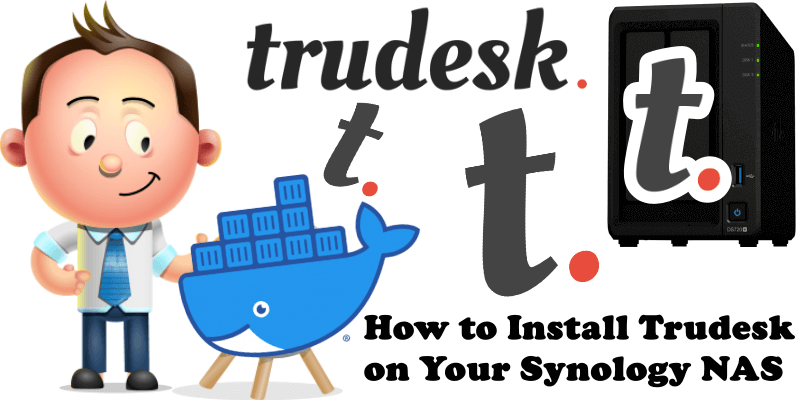
Trudesk is an Open Source Help Desk Software built with one goal in mind: to keep workloads organized and simple. It’s used for customer messaging & user support. Trudesk is built with Node.js and MongoDB and you can easily run it with Docker. In this step by step guide I will show you how to install Trudesk on your Synology NAS using Docker and Portainer.
This guide works perfectly with the latest Trudesk v1.2.11 release.
⚠️WARNING: Trudesk requires MongoDB 5. MongoDB 5 requires a CPU with AVX support.
Unsupported NAS Models (that don’t support MongoDB 6): DS218+ DS718+ DS220+ DS720+ DS920+ and older consumer models. You can always run Trudesk with an older Mongo database version, but there is no guarantee that Trudesk will continue to work with older Mongo versions. To install Trudesk with MongoDB 4 in unsupported NAS models, read the “Warning” note at STEP 13.
Supported NAS Models (that support MongoDB 6): All NAS models from the 21+, 22+, 23+ 24+ series. Also check the best Synology NAS for Docker.
What is MongoDB? MongoDB is a database. Classified as a NoSQL database program, MongoDB uses JSON-like documents with optional schemas.
STEP 1
Please Support My work by Making a Donation.
STEP 2
Install Portainer using my step by step guide. If you already have Portainer installed on your Synology NAS, skip this STEP. Attention: Make sure you have installed the latest Portainer version.
STEP 3
Make sure you have a synology.me Wildcard Certificate. Follow my guide to get a Wildcard Certificate. If you already have a synology.me Wildcard certificate, skip this STEP.
STEP 4
Go to Control Panel / Login Portal / Advanced Tab / click Reverse Proxy. Follow the instructions in the image below.
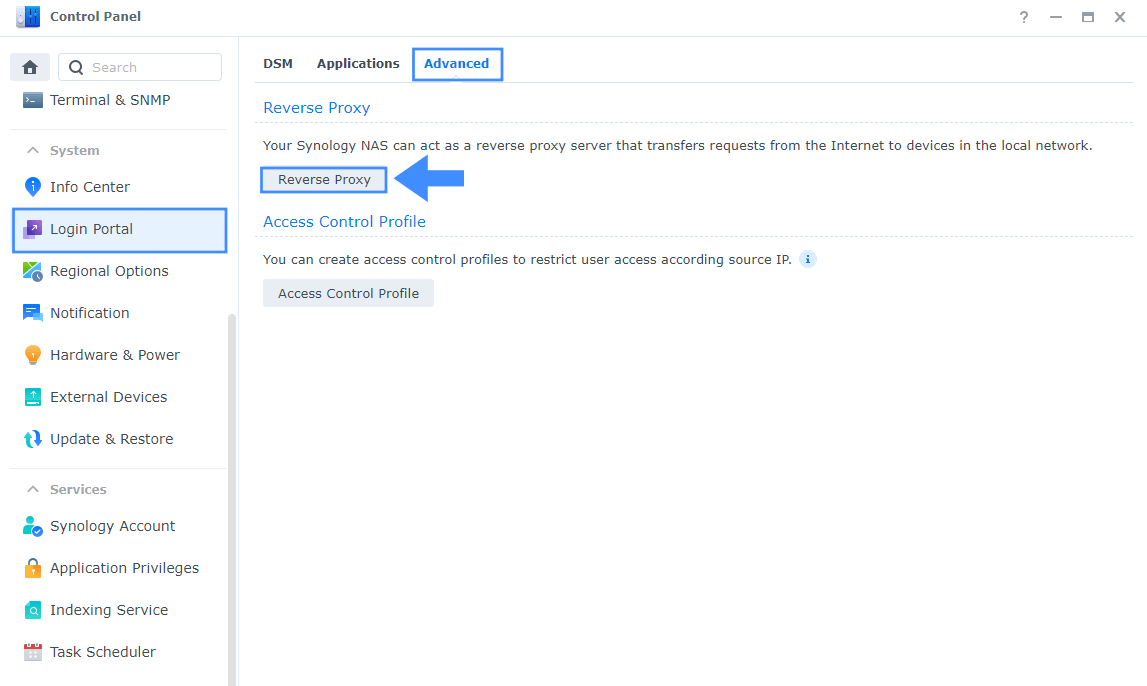
STEP 5
Now click the “Create” button. Follow the instructions in the image below.
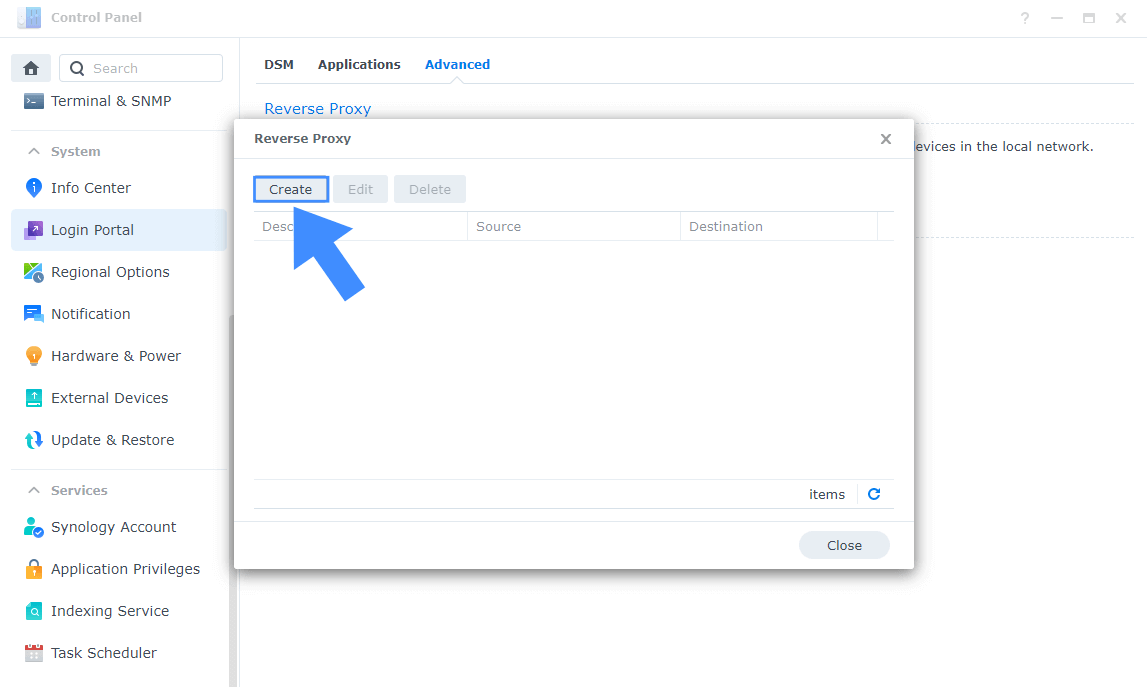
STEP 6
After you click the Create button, the window below will open. Follow the instructions in the image below.
On the General area, set the Reverse Proxy Name description: type in Trudesk. After that, add the following instructions:
Source:
Protocol: HTTPS
Hostname: trudesk.yourname.synology.me
Port: 443
Check Enable HSTS
Destination:
Protocol: HTTP
Hostname: localhost
Port: 8118
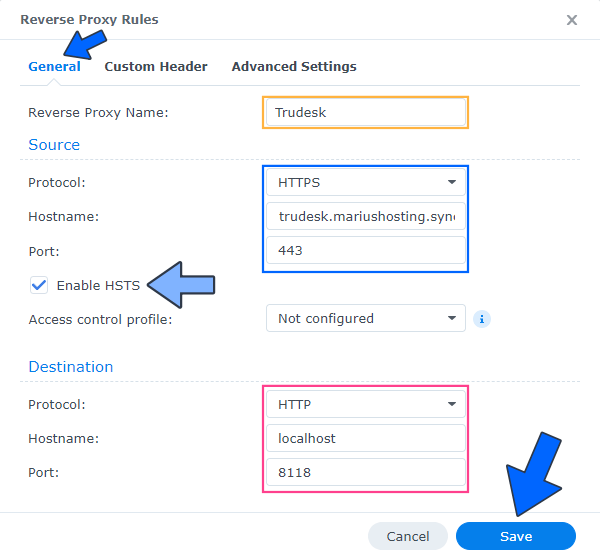
STEP 7
On the Reverse Proxy Rules click the Custom Header tab. Click Create and then, from the drop-down menu, click WebSocket. After you click on WebSocket, two Header Names and two Values will be automatically added. Click Save. Follow the instructions in the image below.

STEP 8
Go to Control Panel / Network / Connectivity tab/ Check Enable HTTP/2 then click Apply. Follow the instructions in the image below.
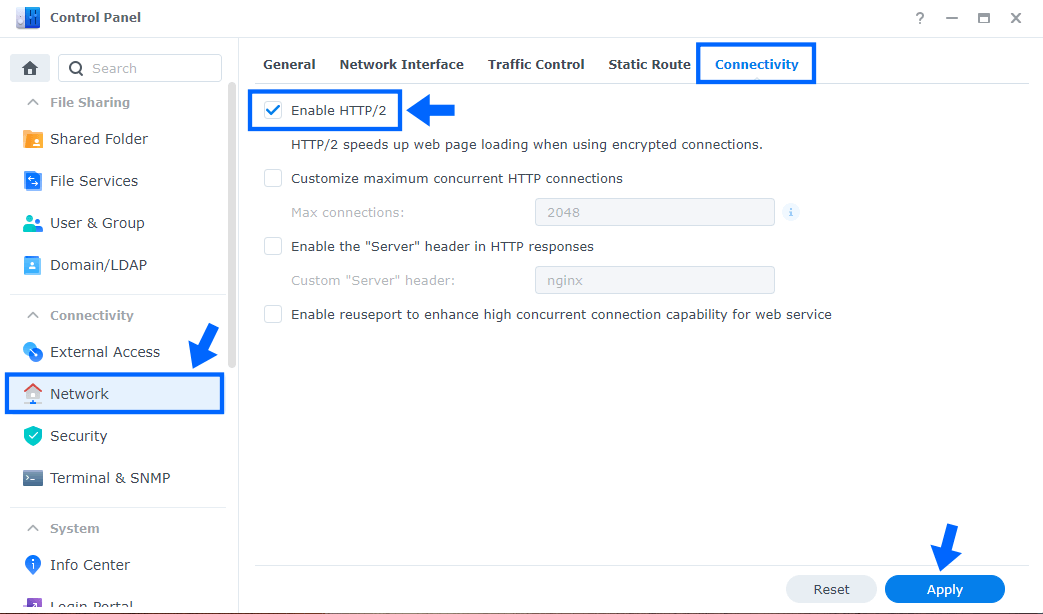
STEP 9
Go to Control Panel / Security / Advanced tab/ Check Enable HTTP Compression then click Apply. Follow the instructions in the image below.

STEP 10
Go to File Station and open the docker folder. Inside the docker folder, create one new folder and name it trudesk. Follow the instructions in the image below.
Note: Be careful to enter only lowercase, not uppercase letters.
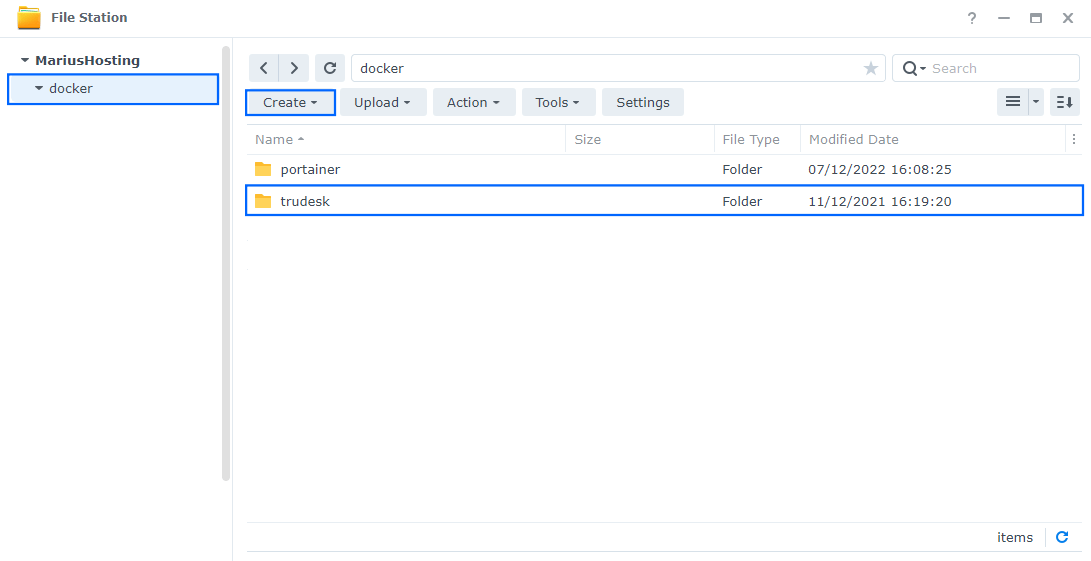
STEP 11
Now create three new folders inside the trudesk folder that you created at STEP 10 and name them backups, db, uploads. Follow the instructions in the image below.
Note: Be careful to enter only lowercase, not uppercase letters.

STEP 12
Log into Portainer using your username and password. On the left sidebar in Portainer, click on Stacks then + Add stack. Follow the instructions in the image below.

STEP 13
In the Name field type in trudesk. Follow the instructions in the image below.
version: '3.9'
services:
trudesk:
image: polonel/trudesk
container_name: Trudesk
restart: on-failure:5
ports:
- 8118:8118
dns:
- 8.8.8.8
- 1.1.1.1
environment:
NODE_ENV: production
TRUDESK_DOCKER: true
TD_MONGODB_SERVER: mongo
TD_MONGODB_DATABASE: trudesk
TZ: Europe/Bucharest
volumes:
- /volume1/docker/trudesk/uploads:/usr/src/trudesk/public/uploads:rw
- /volume1/docker/trudesk/backups:/usr/src/trudesk/backups:rw
mongo:
image: mongo:6 #or mongo:4
container_name: Trudesk-DB
restart: on-failure:5
ports:
- 27017:27017
volumes:
- /volume1/docker/trudesk/db:/var/lib/mongo:rw
- /volume1/docker/trudesk/db:/data/configdb:rw
- /volume1/docker/trudesk/db:/data/db:rw
Note: Before you paste the code above in the Web editor area below, change the value for TZ. (Select your current Time Zone from this list.)
Warning: As I explained at the beginning of this article, if your NAS CPU does not have AVX support, in the code above type in mongo:4 instead of mongo:6.
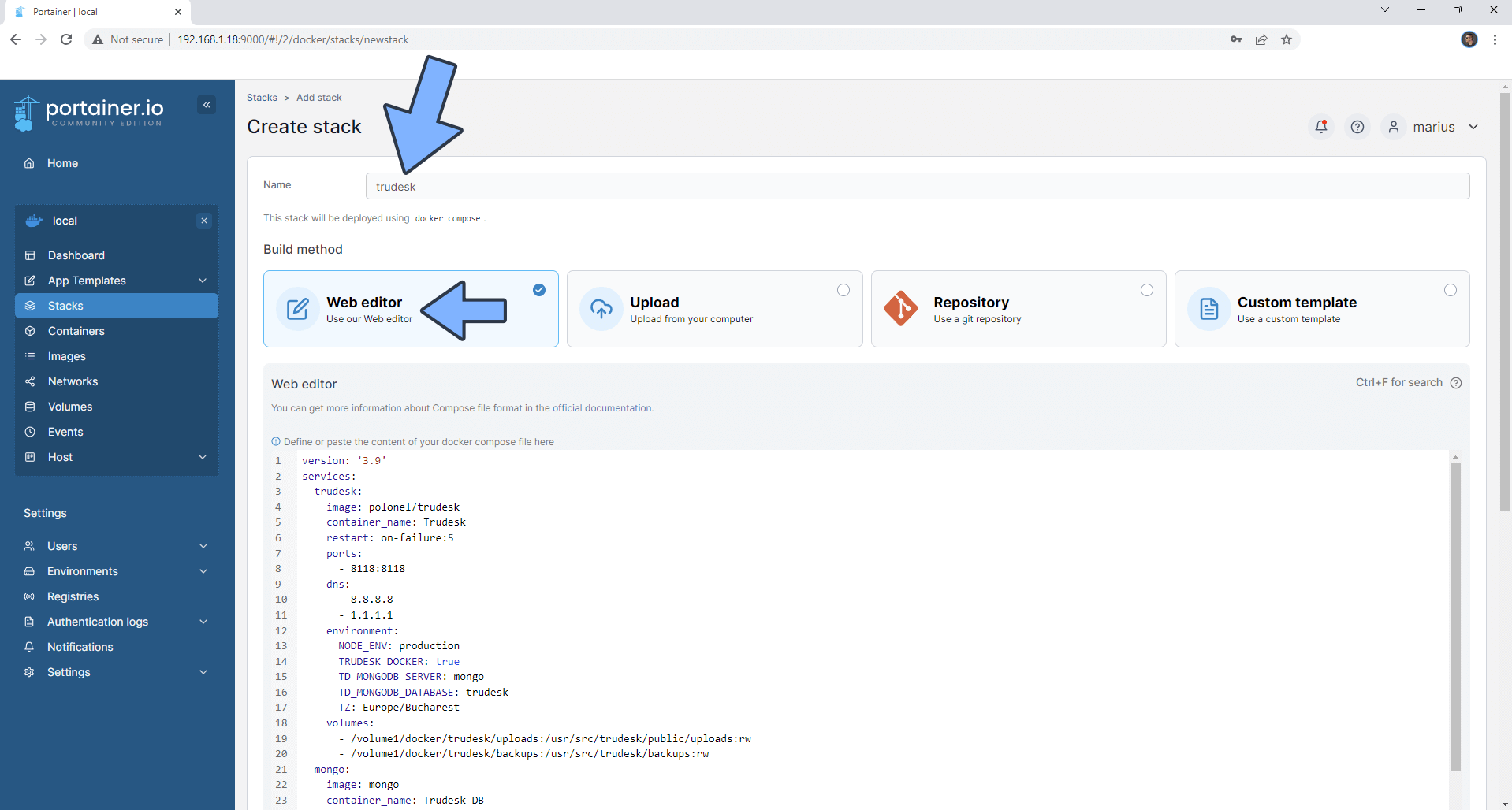
STEP 14
Scroll down on the page until you see a button named Deploy the stack. Click on it. Follow the instructions in the image below. The installation process can take up to a few minutes. It will depend on your Internet speed connection.
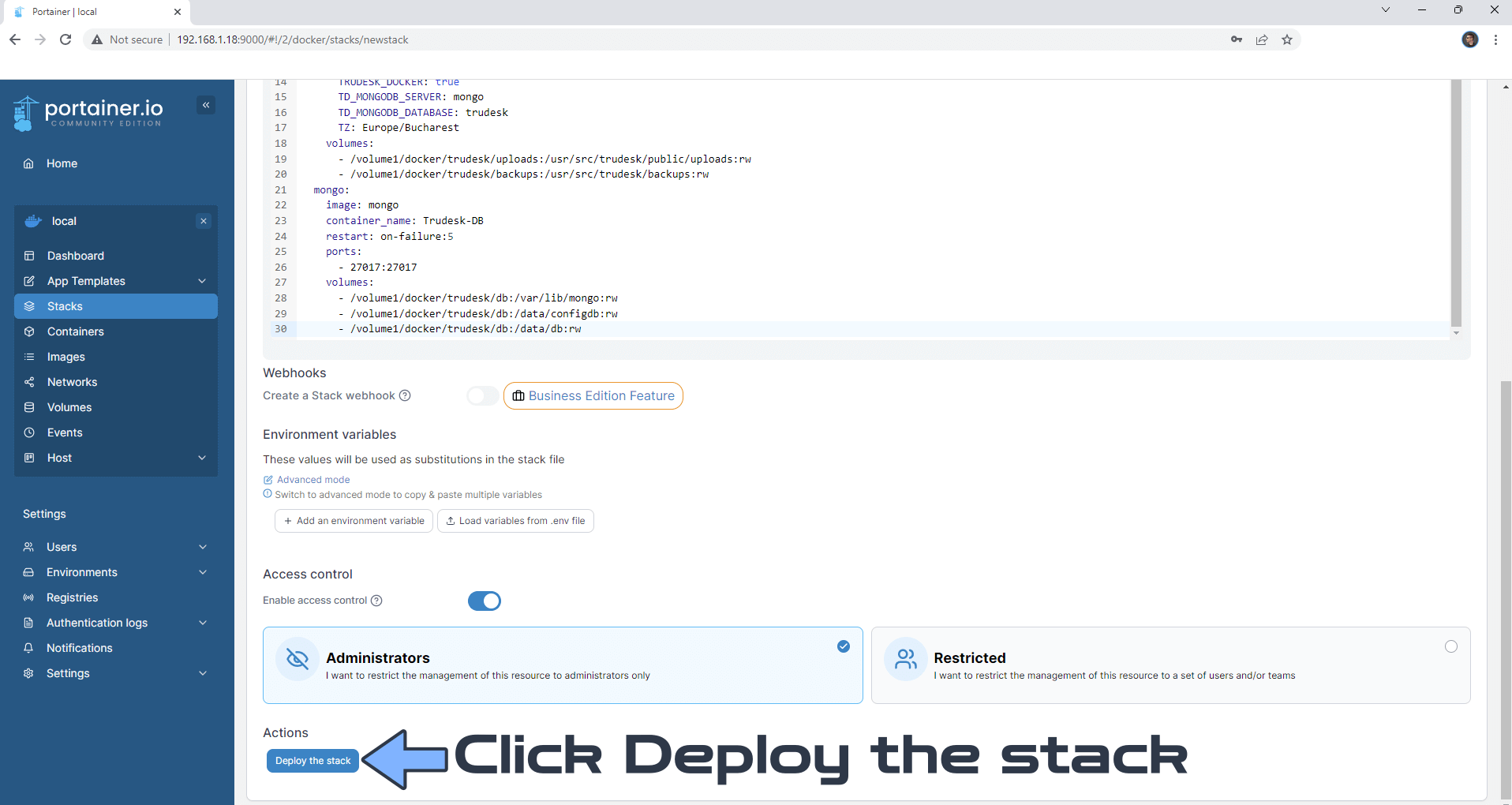
STEP 15
If everything goes right, you will see the following message at the top right of your screen: “Success Stack successfully deployed“.
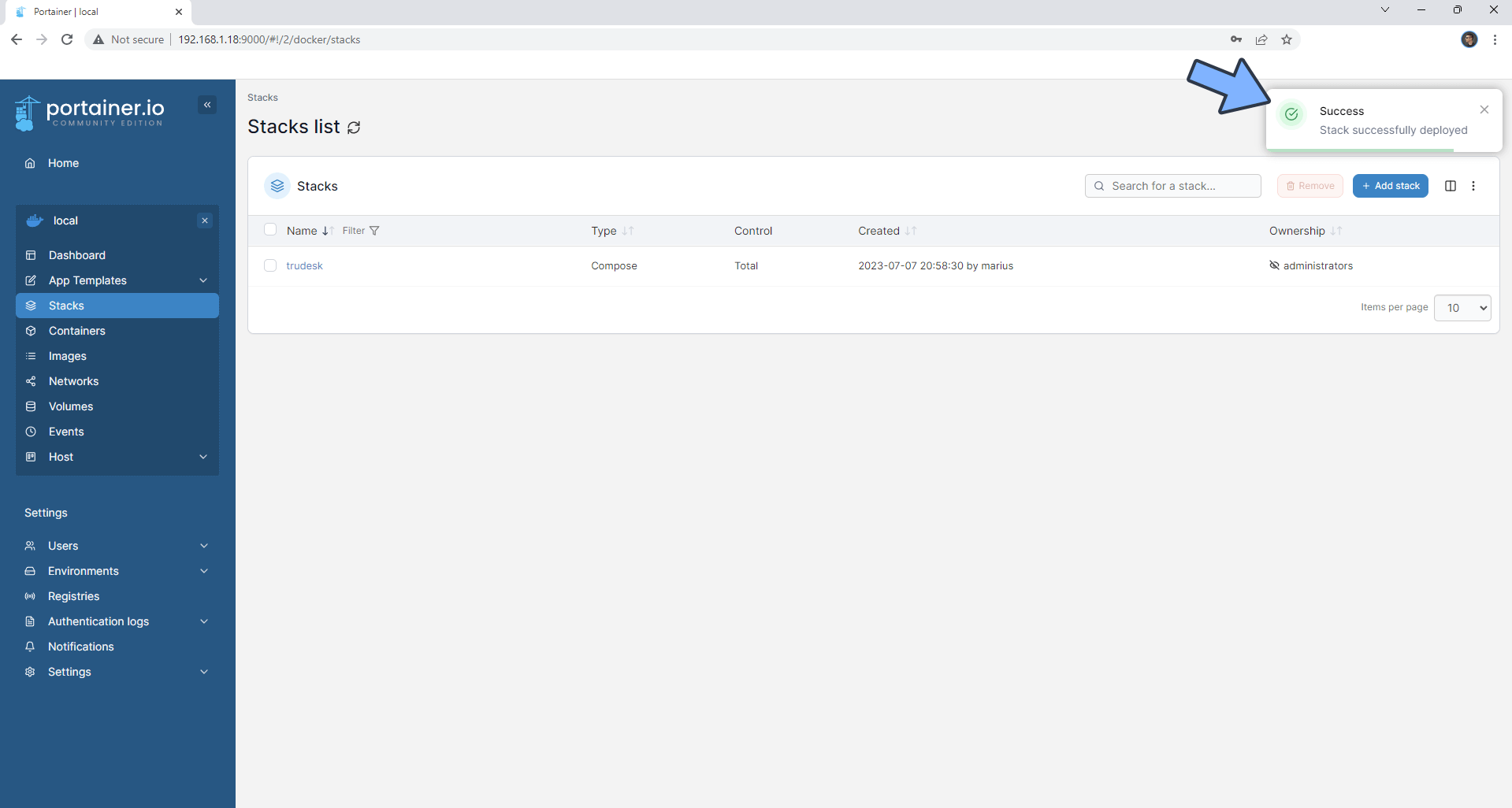
STEP 16
🟢Please Support My work by Making a Donation. Almost 99,9% of the people that install something using my guides forget to support my work, or just ignore STEP 1. I’ve been very honest about this aspect of my work since the beginning: I don’t run any ADS, I don’t require subscriptions, paid or otherwise, I don’t collect IPs, emails, and I don’t have any referral links from Amazon or other merchants. I also don’t have any POP-UPs or COOKIES. I have repeatedly been told over the years how much I have contributed to the community. It’s something I love doing and have been honest about my passion since the beginning. But I also Need The Community to Support me Back to be able to continue doing this work.
STEP 17
Now open your browser and type in your HTTPS/SSL certificate like this https://trudesk.yourname.synology.me In my case it’s https://trudesk.mariushosting.synology.me If everything goes right, you will see the Trudesk installation page. Click LET’S START. Follow the instructions in the image below.
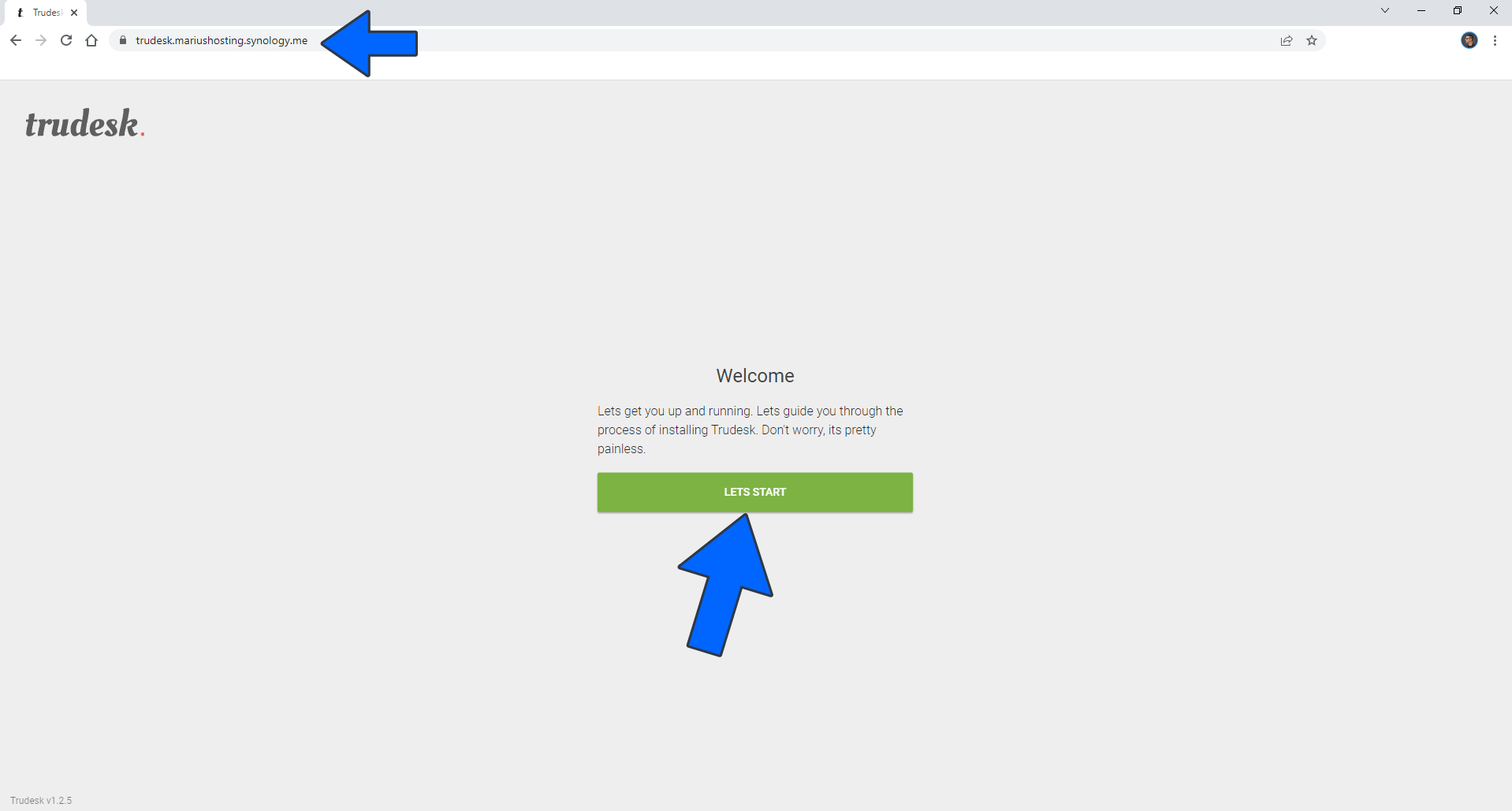
STEP 18
Add your own Username, your Full Name, your own Password and your own Email, then click CREATE ADMIN. Follow the instructions in the image below.
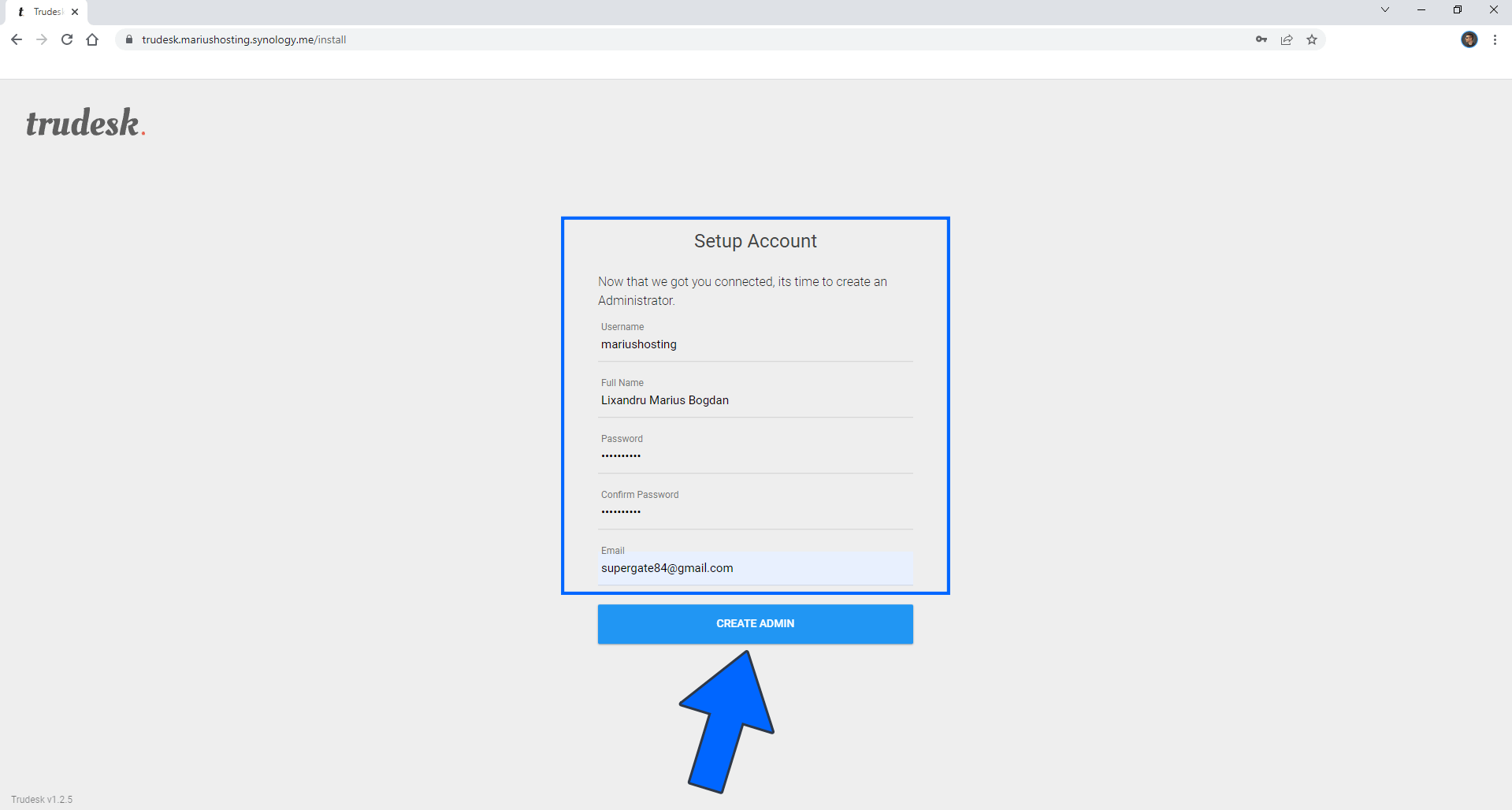
STEP 19
Click RESTART ME! Follow the instructions in the image below.
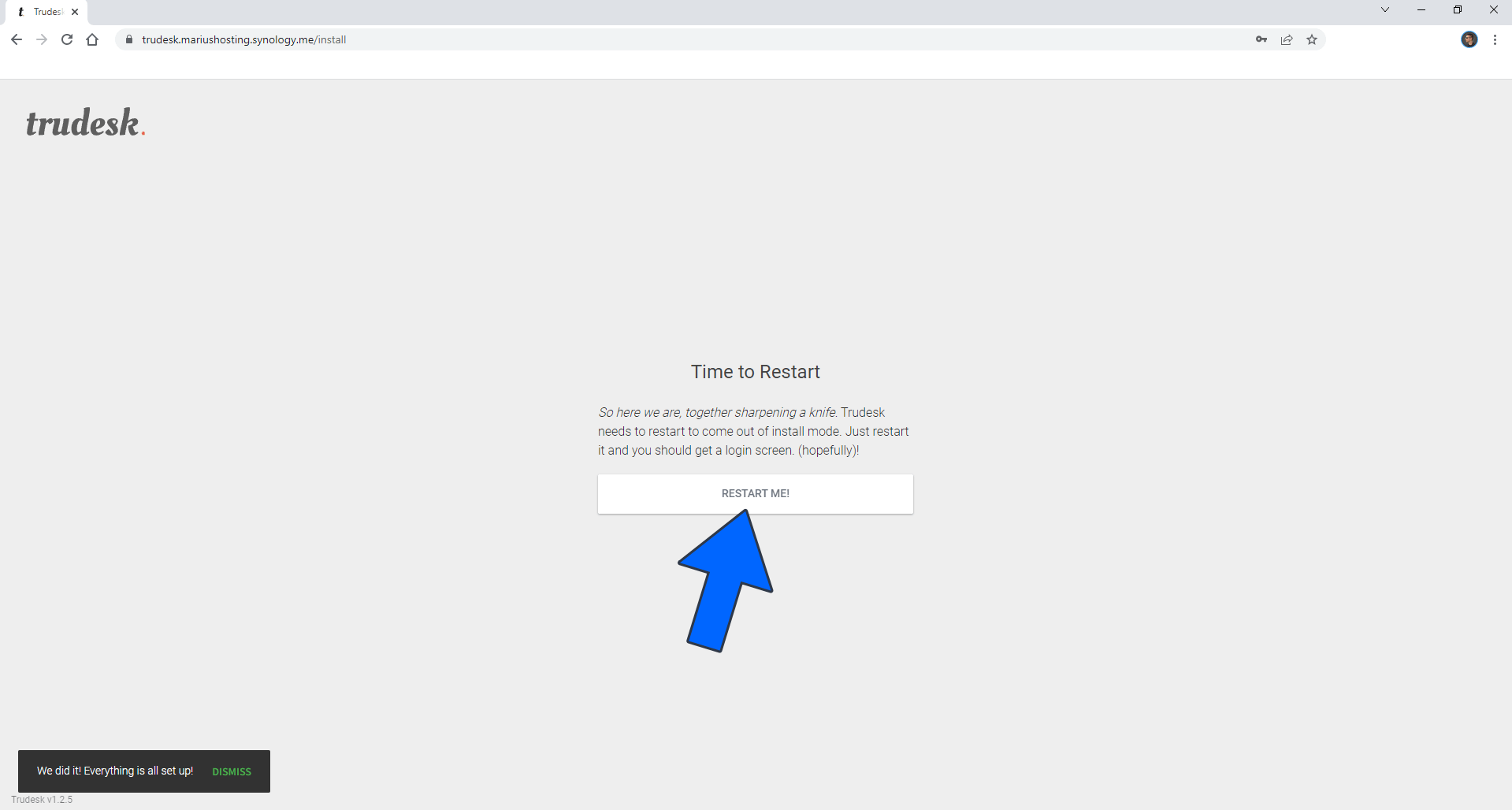
STEP 20
Add your own Username and Password that you have previously created at STEP 18, then click LOGIN. Follow the instructions in the image below.
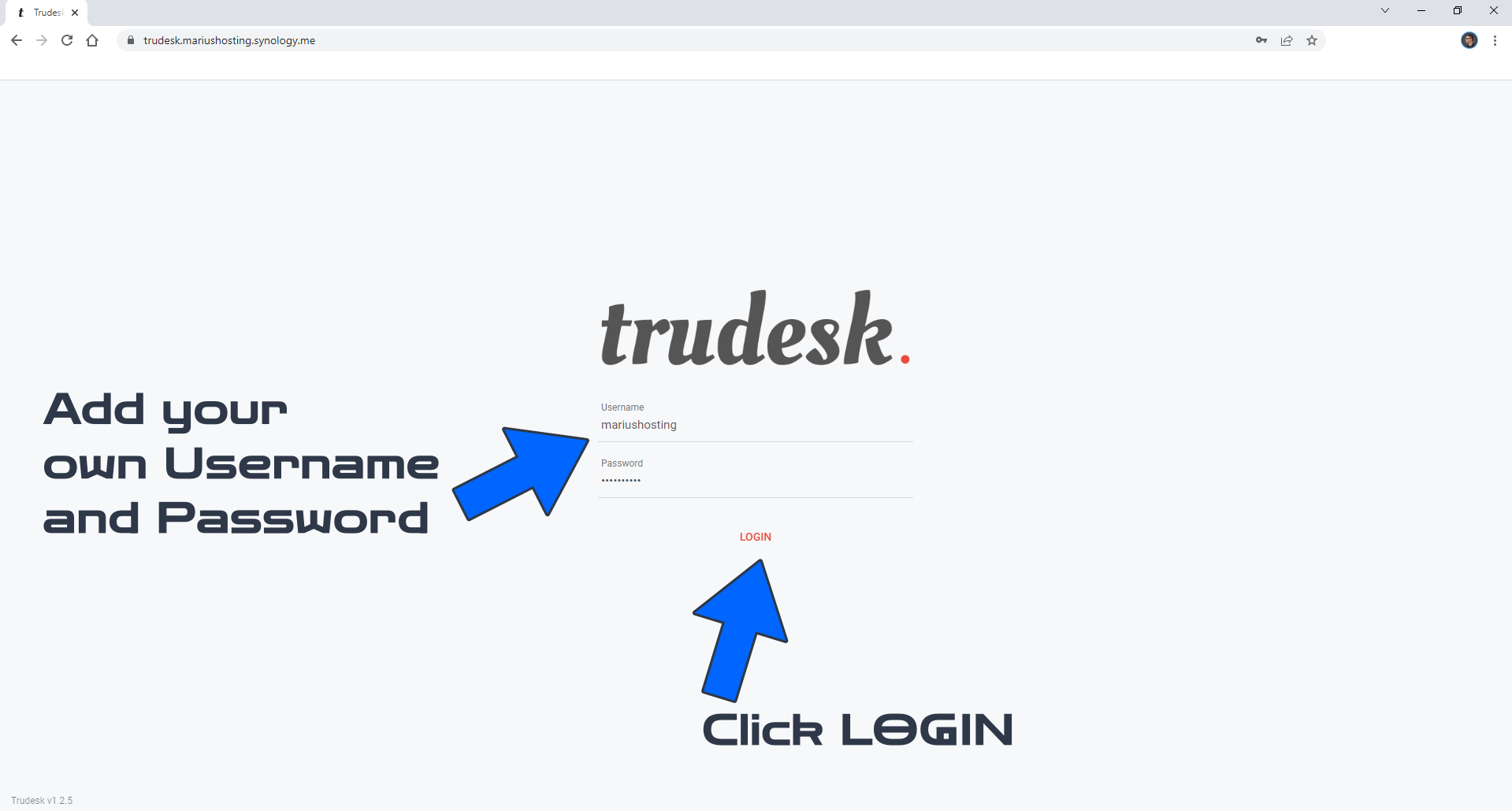
STEP 21
Welcome to the trudesk Dashboard!
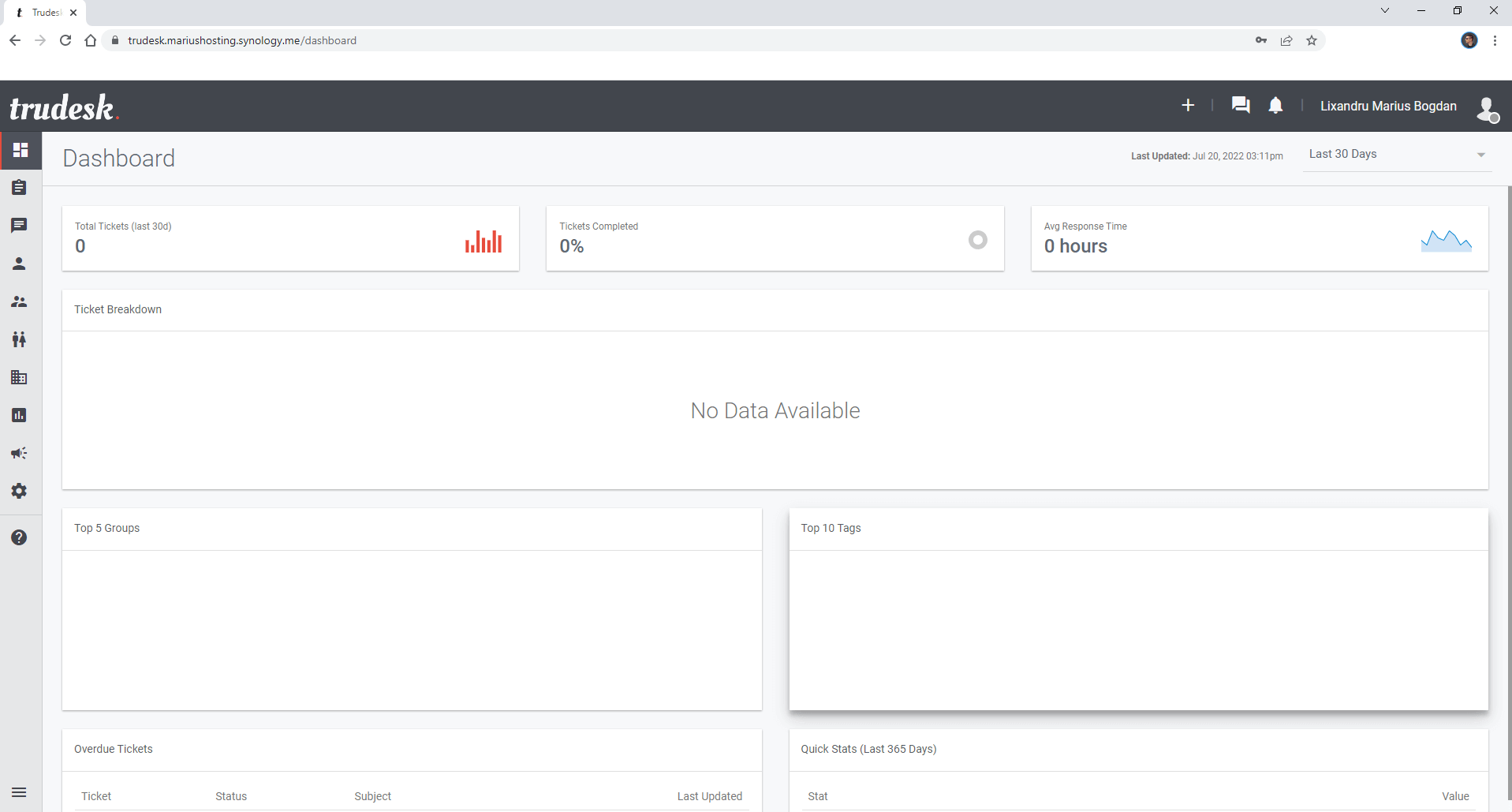
STEP 22
On the left sidebar click Settings. Change the Site Url and add https instead of http, then click SAVE. Follow the instructions in the image below.
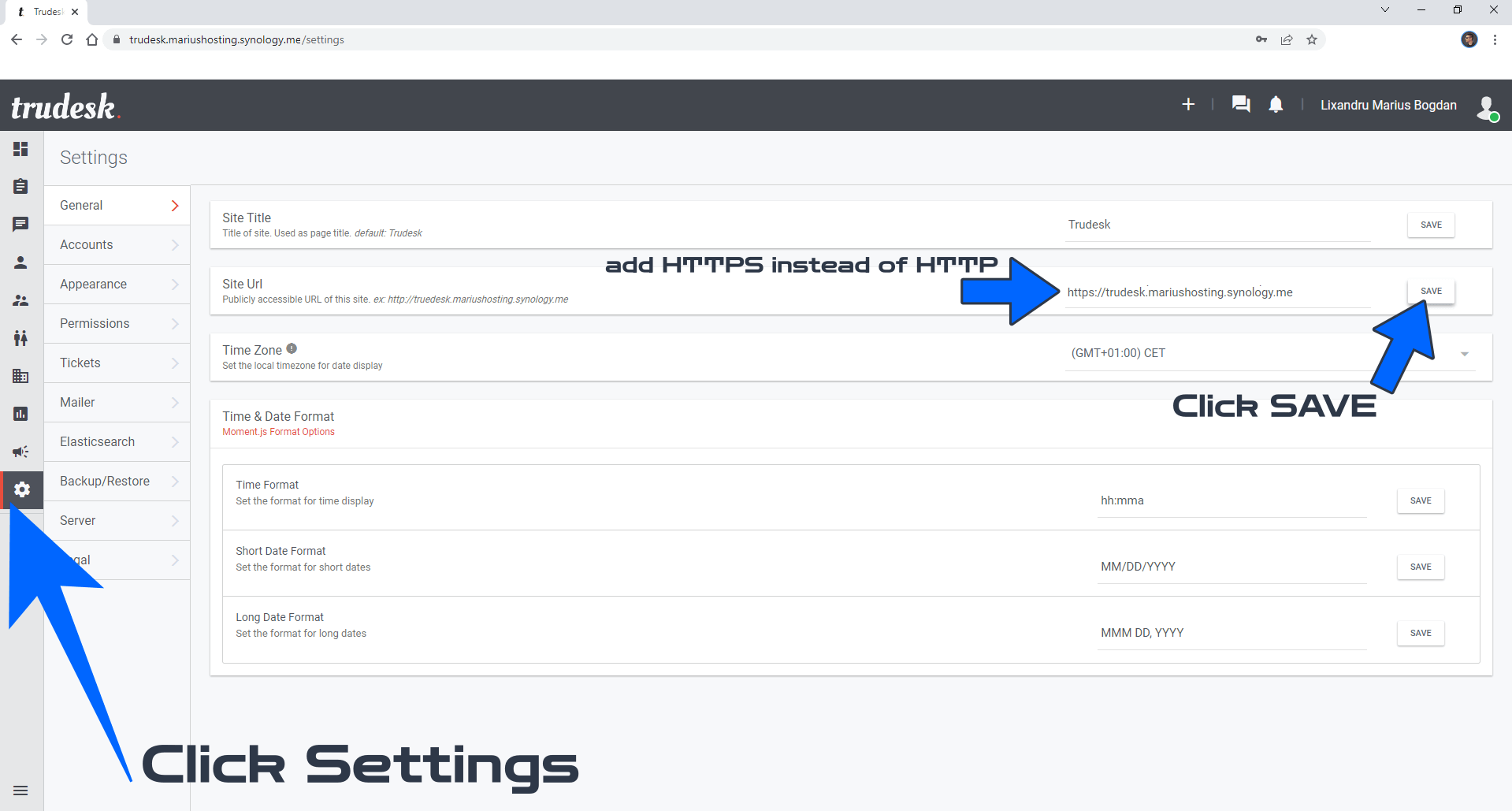
STEP 23
On the left sidebar click Settings then Appearance. You can easily change your Site logo, Page Logo, Favicon and Color Scheme. Follow the instructions in the image below.
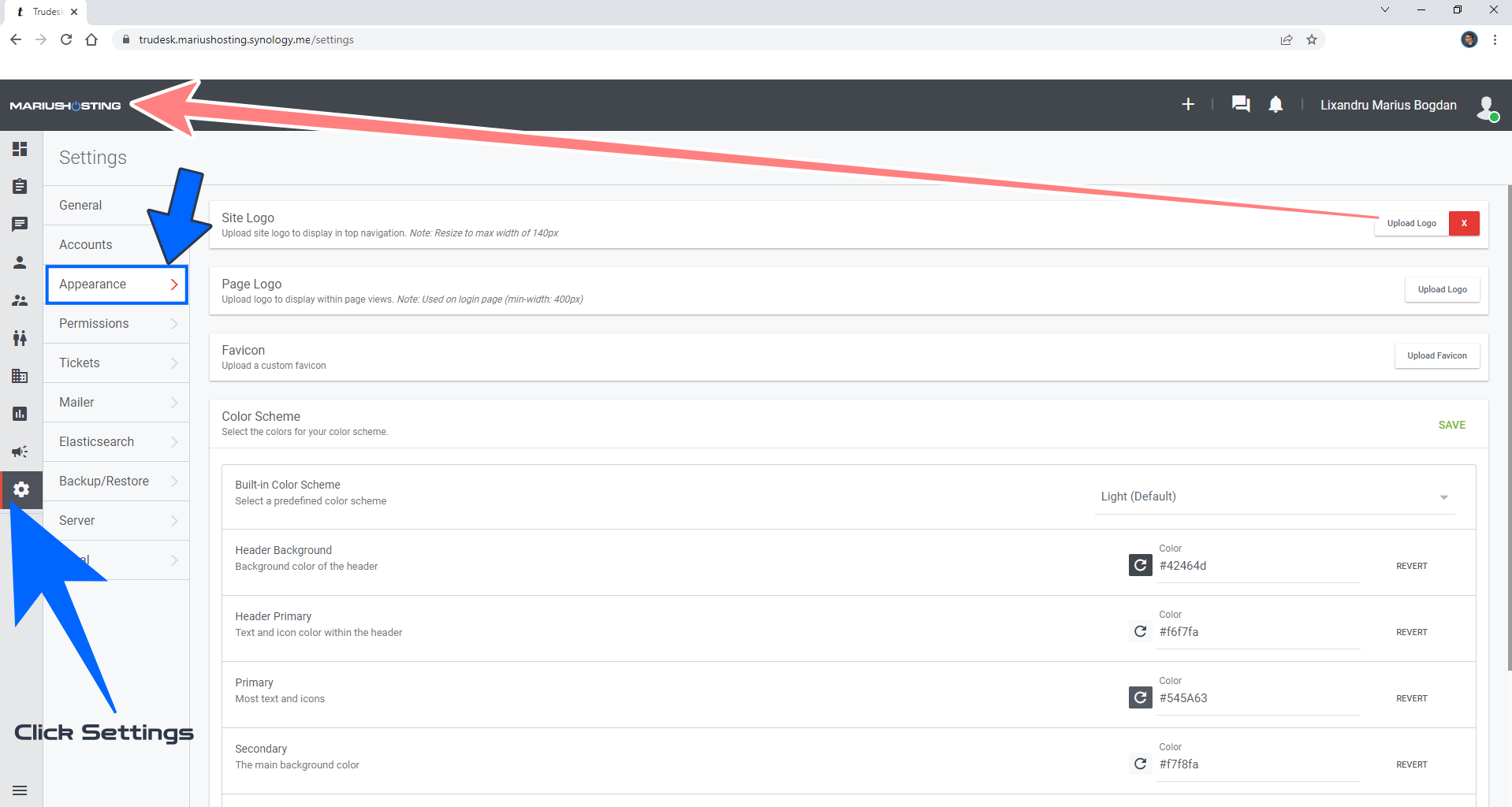
If you encounter issues by using this container, make sure to check out the Common Docker issues article.
Note: Make sure RULE 5 and RULE 6 is correctly applied on your Synology NAS Firewall configuration.
Fix: MongoDB 5 requires a CPU with AVX support.
Unsupported NAS Models (that don’t support MongoDB 5): DS218+ DS718+ DS220+ DS720+ DS920+ and older consumer models. You can always run trudesk with an older mongo version. To install trudesk with MongoDB in unsupported NAS models just change the line at STEP 13 from image: mongo to image: mongo:4.0
Supported NAS Models (that support MongoDB 6): All NAS models from the 21+ and 22+ series.
Note: It’s a possibility that older NAS devices have AVX support. Check your NAS CPU to see if it supports AVX.
What is MongoDB? MongoDB is a database. Classified as a NoSQL database program, MongoDB uses JSON-like documents with optional schemas.
Note: Find out how to update the Trudesk container with the latest image.
Note: How to Back Up Docker Containers on your Synology NAS.
Note: Can I run Docker on my Synology NAS? See the supported models.
Note: How to Free Disk Space on Your NAS if You Run Docker.
Note: How to Schedule Start & Stop For Docker Containers.
Note: How to Activate Email Notifications.
Note: How to Add Access Control Profile on Your NAS.
Note: How to Change Docker Containers Restart Policy.
Note: How to Use Docker Containers With VPN.
Note: Convert Docker Run Into Docker Compose.
Note: How to Clean Docker.
Note: How to Clean Docker Automatically.
Note: Best Practices When Using Docker and DDNS.
Note: Some Docker Containers Need WebSocket.
Note: Find out the Best NAS Models For Docker.
Note: Activate Gmail SMTP For Docker Containers.
This post was updated on Saturday / January 18th, 2025 at 10:37 AM
